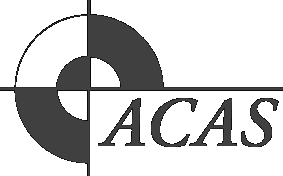
ACAS course procedure
This version: 2019, rev. 2020
Purpose
This procedure outlines the steps involved to authorize the enrolment of students in ACAS qualifications in an ACAS qualification.
- Its purpose is to maintain compliance with some organization protocols (e.g. outstanding debts) and with the SRTO.
- It is almost the same whether the qualification is offered by the Centre or by another site.
- It is under continual review.
N.B. The proposed new audit procedure will simplify many of these requirements.
Trainers/assessors
- All trainers/assessors must fill in/update the staff form (Approval to deliver) and provide copies of required credentials, unless recently done in an audit. E.g.
- CV
- Testamurs/transcripts of qualifications
- Evidence of 1) current industry skills and 2) training and assessment skills kept up to date
- ACAS checks staff information.
- If it is correct, go to next step.
- If possible/necessary, verify qualifications/credentials.
Training and assessment strategy
- If the program/site does not have a current Training and Assessment Strategy specifically for the version of the course it offers, the program/site administrator fills it in or updates it. It proposes course training and assessment and provides various compliance information for that particular program. The approval of a Training and Assessment Strategy indicates that the proposed program has been approved as meeting the requirements that it addresses.
Checking procedure
- Does that site have outstanding debts to ACAS Centre?
- If no, don’t approve until debts are paid.
- If yes, continue to next step.
- Is the agreement current with that particular site?
- If no, is a new agreement necessary? If so, don’t approve until a new agreement is completed.
- Was the program/site audited in the last 12 months for this qualification?
- If no, is a new audit necessary? If so, don’t approve until a new audit is completed.
- If yes, have all non-compliances been fixed? If not fixed, don’t approve until all non-compliances have been fixed.
- If the program/site was audited in the last 12 months for this qualification, and compliant:
- Are all instructor-assessor records up to date?
- Are all training and assessment resources up to date?
- If applicable, are lists of required equipment up to date and verified?
- What new publicity literature has been issued? Has it been checked?
- ACAS checks whether the information on the TAS form and its enclosures meets relevant standards. (E.g. packaging, current scope and version of qualification, industry consultation, SRTO requirements, sufficient trainers/assessors).
- Compare the skills of instructors/assessors with the units to be taught/assessed. Is everything covered?
- Are trainers and assessors sufficient? The criteria for sufficient trainers are as follows:
- Past experience in that program as an indicator
- The anticipated number of students
- The schedule
- Whether personnel will be doing both training and assessment, or whether different people are needed for both functions
- Whether personnel are qualified to teach and assess all proposed units
- The known risk of specific personnel becoming unavailable
- Number of assistants with skillsets
- Risk relating to only one qualified trainer/assessor (e.g. government schools always employ a qualified replacement)
- If the TAS and its enclosures do not meet relevant standards, get the person who wrote it to make corrections and resubmit it.
- If approved, go to next step.
- The database manager sets up the course database.
- Do students need Austudy?
- If yes, check that ACAS has applied for it for the current year.
- ACAS responds to staff:
- It issues the each program/site administrator a set of unique student enrollment numbers.
- It issues staff passwords if needed.
- Put relevant information on the website.
Note: Some items are audited separately: e.g. Information and websites.